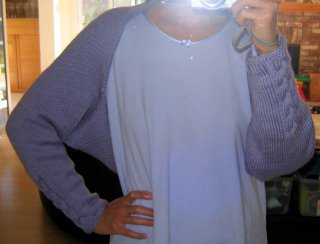#2, 3, 4 Hello Goth! 3 Gray tiered skirts
#5 Household sewing pink and gray tiered skirt
#6 Blue again
Is it a command performance if she isn't royalty? How about a demand performance?
Anyway, I started with Bad Dad's badly frayed black watch plaid shirt. Over the years, it had deteriorated from a lightweight canvas to a poplin-like weight and softness.
 |
| Auditioning fabrics. |
I bought this fabric nearly 20 years ago for a green + purple tessellated quilt that now lives with my SIL. I saved the scrap, moved it to LA, and then moved it back to Boulder--only 1 block from the store where I originally purchased it. The scrap, in the form of a finished skirt, is going back to LA.
 |
| Well-traveled fabric. |
 |
| Each side has a flash of white. |
 |
| Another view from a different side. |
 |
| Spread out on the floor. |
Machine pleaters work best on fabrics with 'grip' such as quilting cotton. They pleat much less effectively on slippery fabric such as the fine cotton poplin at the top.
I start with a 9" deep top tier cut at 120-125% of the hip width of the wearer. The other 3 tiers are 8" deep. After making the waist casing, I end up with 4 tiers about 7" deep.
Warning: At a 1.67 ratio, that means a finished hem of ~200".
The recycled shirt fabric will wear out fastest, so arrange those on the bottom. When they rip, it won't be a major embarrassment. ;-)
Cut the shirt bottom 9" deep at the center fronts. The sides curve up so your overall skirt length will be 29-31". Reuse shirt hems to reduce the amount of hemming you need to do. Hem the fabric strips attached to the shirt hems before joining them!
If the selvedges are an even tension, leave them in place. You can use their non-fraying edges and the shirt placket to encase the raw edges of other pieces for a clean finish.
 |
| Reuse hem and plackets. |
- Sew the RS of the raw edge to the WS of the clean edge, with the clean edge extending about .5".
- Flip the raw edged piece so the RS is behind the clean edged piece and topstitch from the RS.
 |
| Pocket flap button resewn after assembly. |
 |
| Interior view of pocket. |
 |
| Clean-finished interior with one serged vertical seam. |
 |
| Use selvedges, too. |
 |
| One of two thrifted shirts perfectly color-matched for top. |
This skirt took 5 hours of work time spread over 6 hours of elapsed time. That's 300 minutes of work for a skirt that is already frayed and will continue to degrade. This isn't clothing construction; this is performance art.
I've been following Handmade by Carolyn's One year, one outfit project. She's making an outfit entirely made up of components sourced in her local environment of Western Australia. That is not easy in this day of globalization. Zippers and buttons are made in only a few places in the world now. She's making everything from scratch--right down to carving her own shoe soles from local wood. I am in awe of everything she does.
My particular performance art shtick* is to see what I can make from castoffs. Bad dad wore the shirt for years until the visible fraying wasn't fit for public wear. The small sprigged print is leftover from a quilt project.
The other two fabrics come from odd-jobbers in LA. The black poplin appears to be a fabric sample used in a wash/shrinkage test and the swirly black/green quilting cotton has small printing flaws. To most people, the components are textile waste. To DD, this is her signature look. To me, this is how I assuage my enviroguilt for living in two places** and flying back and forth.
* Carolyn, I don't mean to call your project shtick. I'm only saying that my work is shtick.
** To be fair, two-PhD families have a very rough time finding jobs in the same place so this living arrangement isn't something we have control over. That doesn't make the enviroguilt completely disappear.





























